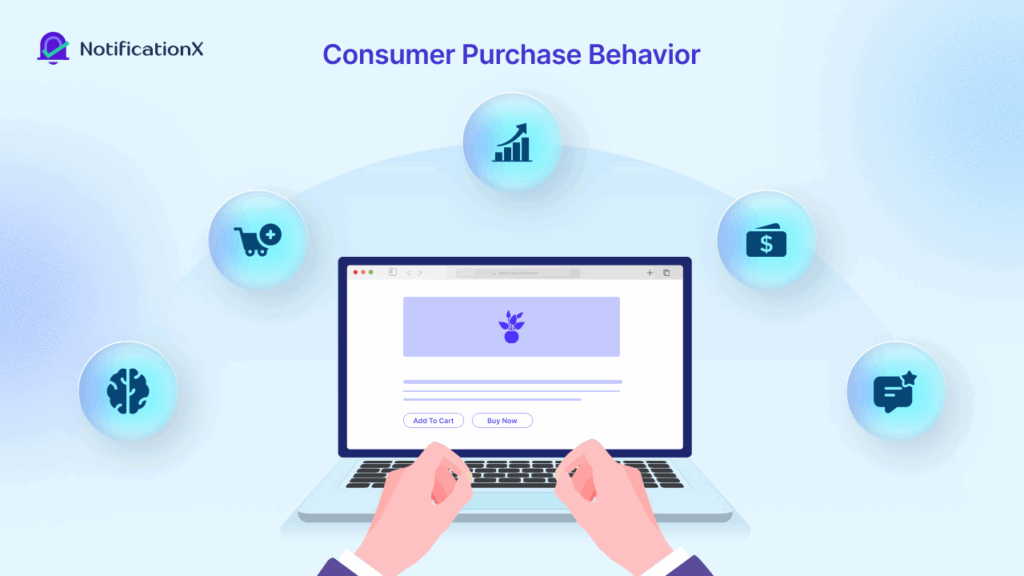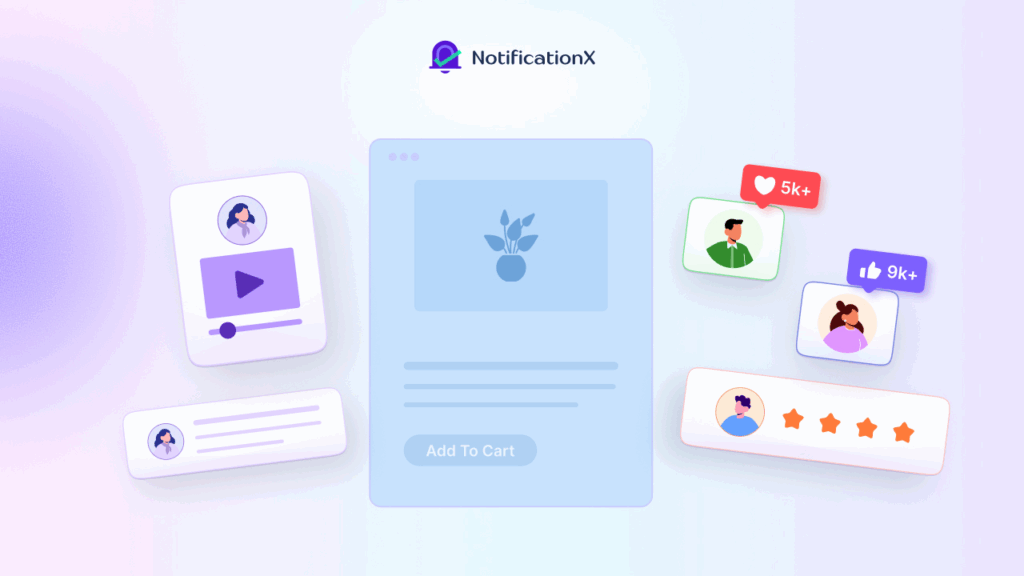Imagine your last stop at Burger King to understand cross-selling and upselling. Even though it may seem hard to remember, try to recall what you ordered. You may have gone into the restaurant just for a small snack, such as fries and soft drinks, but you might have purchased a full Happy Meal instead. An everyday scenario like this reveals how companies/brands across industries use sales strategies to increase revenue and improve customer service.

Today, in this blog, you will learn about the two most common sales strategies, upselling and cross-selling, their definitions, and key differences.
What Is Cross-Selling?
As a sales technique, cross-selling involves recommending complementary products that will enhance the value and utility of a customer’s original purchase. In contrast to cold outreach, cross-selling utilizes your existing clients’ potential to attract new customers. You can view it as a win-win situation: customers get better solutions, and businesses grow their sales.
For instance, an electronics store would cross-sell its customers an external mouse, protective case, or software package if they purchased a laptop. A secondary product fulfills additional needs that aren’t covered by the primary one, but have a clear relationship to the buyer’s interests.
A key reason why this technique is so successful is that it relies heavily on context and relevance. As opposed to blindly pushing unrelated items, cross-selling suggests products or services that customers are likely to appreciate, adding genuine value to the customer experience.
What Is Upselling?
Cross-selling encourages consumers to purchase additional products, whereas upselling enhances the original purchase. Depending on customers’ needs, it may offer higher-end versions, bigger sizes, or premium features. This is a simple strategy: to improve or upgrade the choice to increase the sale’s value.
Take a look at a streaming service that offers a basic plan for $10 per month. Their upselling plan might include offering extra content, better streaming quality, and offline downloads, as well as upselling to a premium tier of $15 per month. Customers have already decided to subscribe, so upselling takes advantage of that commitment and leads them to a more valuable purchase.
Due to the prospect’s mental commitment to a purchase, upselling is often considered more effective than cross-selling.
Key Differences Between Cross-Selling And Upselling
To create effective sales strategies, you need to distinguish between these two: cross-selling and upselling, although they are often used interchangeably. Let us have a look at the basic differences between upselling and cross-selling.
| Aspect | Cross-Selling | Upselling |
|---|---|---|
| Definition | Selling additional, complementary products | Selling a higher-value version/upgrade |
| Beispiel | Adding headphones when buying a phone | Upgrading from a basic to a premium phone model |
| Goal | Increase total purchase volume | Increase purchase value or margin |
| Pricing Impact | Similar price point products | Usually higher-priced products |
Let us make it simple. A flight seat upgrade from economy to business is an upselling opportunity, while the purchase of snacks or duty-free items during a flight is a cross-selling opportunity. Both strategies aim to boost revenue; however, they achieve this in different ways.
3 Reasons Why Upselling And Cross-Selling Matter?
Businesses are undergoing a fundamental shift. At Inbound 2018, Brian Halligan, CEO of HubSpot, challenged the long-held Sales Funnel model. He believes that traditional funnels are primarily focused on driving prospects toward a sale, ignoring the crucial stages following the sale: customer retention and delight. Using the Flywheel model, he creates a self-sustaining growth cycle by leveraging happy customers to generate referrals.
Why is this important? It is much more cost-effective to retain and grow your current customers than to win new ones, as a Harvard Business Review study shows it can cost 5 to 25 times more.
Thus, upselling and cross-selling are more than supplementary tactics—they are essential growth strategies. Why are they important?
Revenue Boost
You can increase your average order value by using both strategies. In 2006, Amazon’s famous “customers who bought this also bought” feature increased sales by 35%, illustrating cross-selling’s power. In the same manner, upselling premium options encourages customers to spend more, which directly affects profits.
Stronger Customer Bonds
Successfully offering relevant additional or upgraded products builds trust. Customers feel understood and supported, encouraging loyalty and making them more likely to return. That said, it’s essential to avoid pushing products customers don’t need, as this can backfire.
Extended Customer Lifetime Value (CLV)
In subscription-based businesses like SaaS, upselling and cross-selling are key to generating revenue. These strategies can bring in 70-95% of a company’s total income. Instead of just focusing on gaining new customers, SaaS companies often rely on offering existing customers better or additional services to boost their earnings.
Pros and Cons of Cross-Selling
Providing related products to existing customers is the concept of cross-selling. It can lead to more revenue and customer satisfaction, but if done too often, it can backfire, leading to frustration. Simply put, keeping customer needs in balance is crucial to success, indeed.
Pros:
- Increases sales volume by encouraging additional purchases.
- Provides valuable, tailored recommendations that enhance customer loyalty.
- Enhances customer lifetime value.
- Offers convenient one-stop shopping.
- Cost-effective compared to acquiring new customers.
- Targets known clients to increase marketing ROI.
- Expands product awareness.
- Balances and manages inventory with complementary products.
Cons:
- A cross-sell that is overly enthusiastic can annoy and damage your reputation.
- For this technique to be effective, it must be segmented and analyzed carefully.
- Sales staff need to be properly trained, which increases costs.
- Having too much cross-selling can dilute the product message.
- Increases operational costs as unnecessary products are returned
- A lack of options can overwhelm shoppers, resulting in a lack of motivation to make a decision.
- Unless carefully managed, cannibalization of profitable products can occur.
Pros And Cons of Upselling
Upselling aims to encourage customers to purchase items at higher prices. When overdone, it can feel pushy and turn off customers. If revenue is boosted and value added, it can boost revenue and add value. However, offering genuine benefits is the key.
Pros:
- Offers premium services that increase revenues substantially.
- Improves customer satisfaction by offering value-added upgrades.
- Facilitates the movement of slower-moving or higher-margin stocks.
- Builds customer loyalty by demonstrating attention to customer needs.
- Increases customer lifetime spending.
- Adds a touch of exclusivity or high-end to your brand.
Cons:
- Unless customers feel that upselling is relevant or pushy, they can become irritated.
- Mismatching upsells can cause dissatisfaction.
- Customers are more likely to return unwanted upgrades if they buy them.
- Conversion rates are likely to be lower if shoppers are intimidated by complex purchases.
- A training program and additional resources are needed to ensure a successful implementation.
- The upselling of a brand can undermine its trust if it is perceived as greed-driven.
[Bonus] Maximizing Your Cross-Selling And Upselling Strategy with Social Proof
While cross-selling and upselling can be powerful sales-boosting techniques, incorporating social proof can significantly boost their effectiveness. This is where NotificationX comes in. This is a WordPress plugin that utilizes social proof to boost conversions.

Mit real-time notifications (such as recent purchases, reviews, sign-ups & more), NotificationX helps build trust and excitement, which can boost cross-selling and upselling efforts.
For example, when you are upselling a premium product, showing notifications of other customers who have recently made the same choice can motivate visitors to upgrade too.
How NotificationX Can Work with Your Sales Strategy?
A little social proof can go a long way in making your cross-selling and upselling strategies even more effective. With NotificationX, your website can display real-time notifications, using the actions of other customers to inspire similar behavior.
With NotificationX, potential buyers get a sense of urgency and trust to buy more products or upgrade to a higher-value product. Here are some ways you can make it work for you:
- Create Urgency with Social Proof: Show visitors that others are also making similar decisions and encourage them to follow suit.
- Increase Conversions: Notifying customers of recent cross-sell or upsell activity can create a sense of urgency, motivating them to take action and purchase additional items.
- Boost Customer Engagement: Through NotificationX, you can gently encourage upsells during checkout by highlighting complimentary products or premium versions.
- Ideal for eCommerce and SaaS: Your cross-sell and upsell offers can improve customer experience and conversion rates with NotificationX, regardless of whether you sell physical products or subscription plans.
Unlock Your Business Potential with Cross-Selling and Upselling
The ability to cross-sell and upsell is essential for businesses looking to increase profitability and deepen customer relationships. The techniques discussed here allow you to get more value from each customer interaction, improving the efficiency and customer focus of your sales processes.
Knowing when and how to use each strategy depends on the situation, so each approach can not be applied to all situations. A good cross-sell or upsell does not allow you to sell more-it delivers more value, enhances customer satisfaction, and fosters customer loyalty. Hope you find the blog helpful. Do Abonnieren Sie unsere Blogs & tritt unserer Gemeinschaft bei to get more tips, tricks and trends for your marketing strategy.




